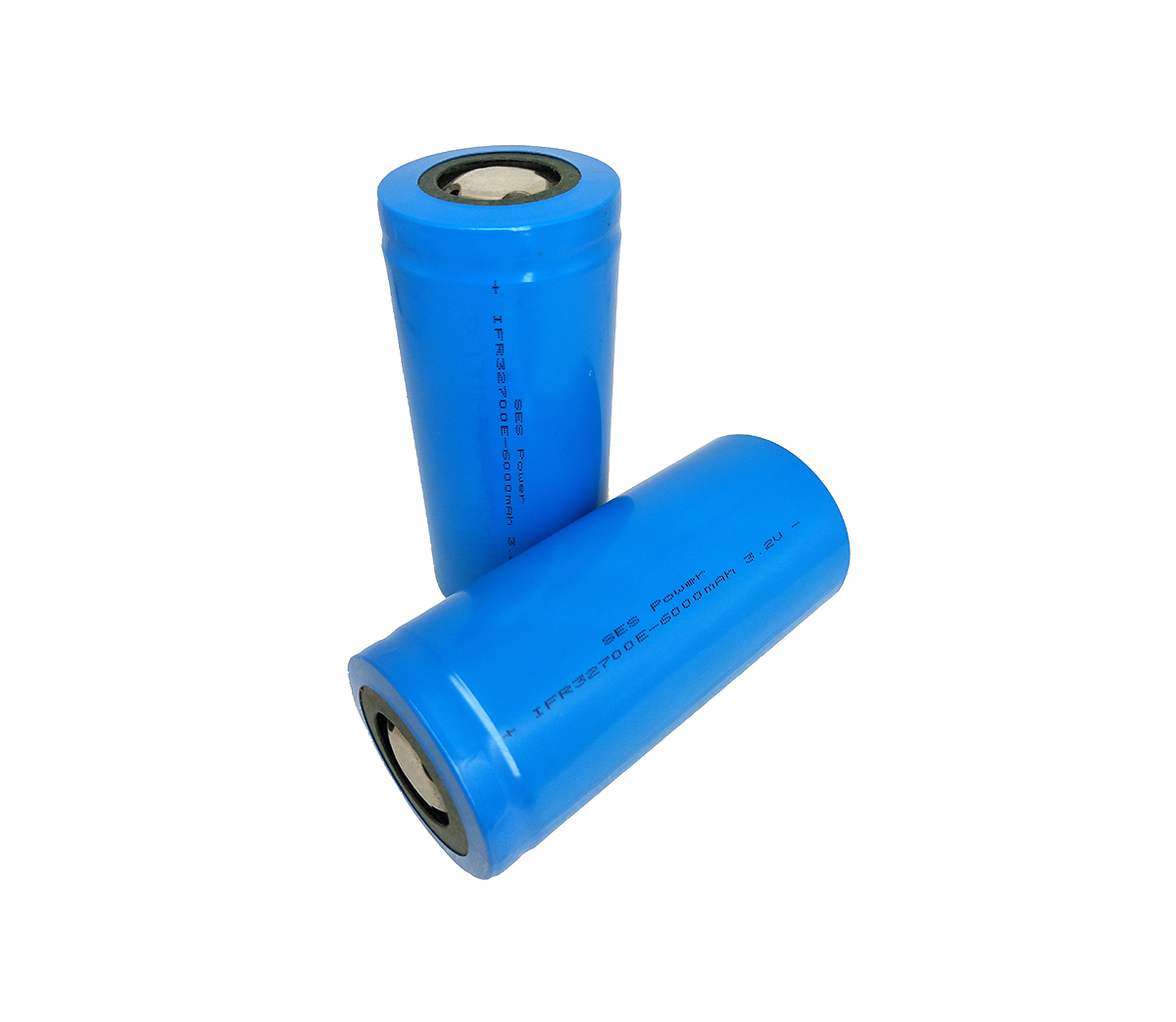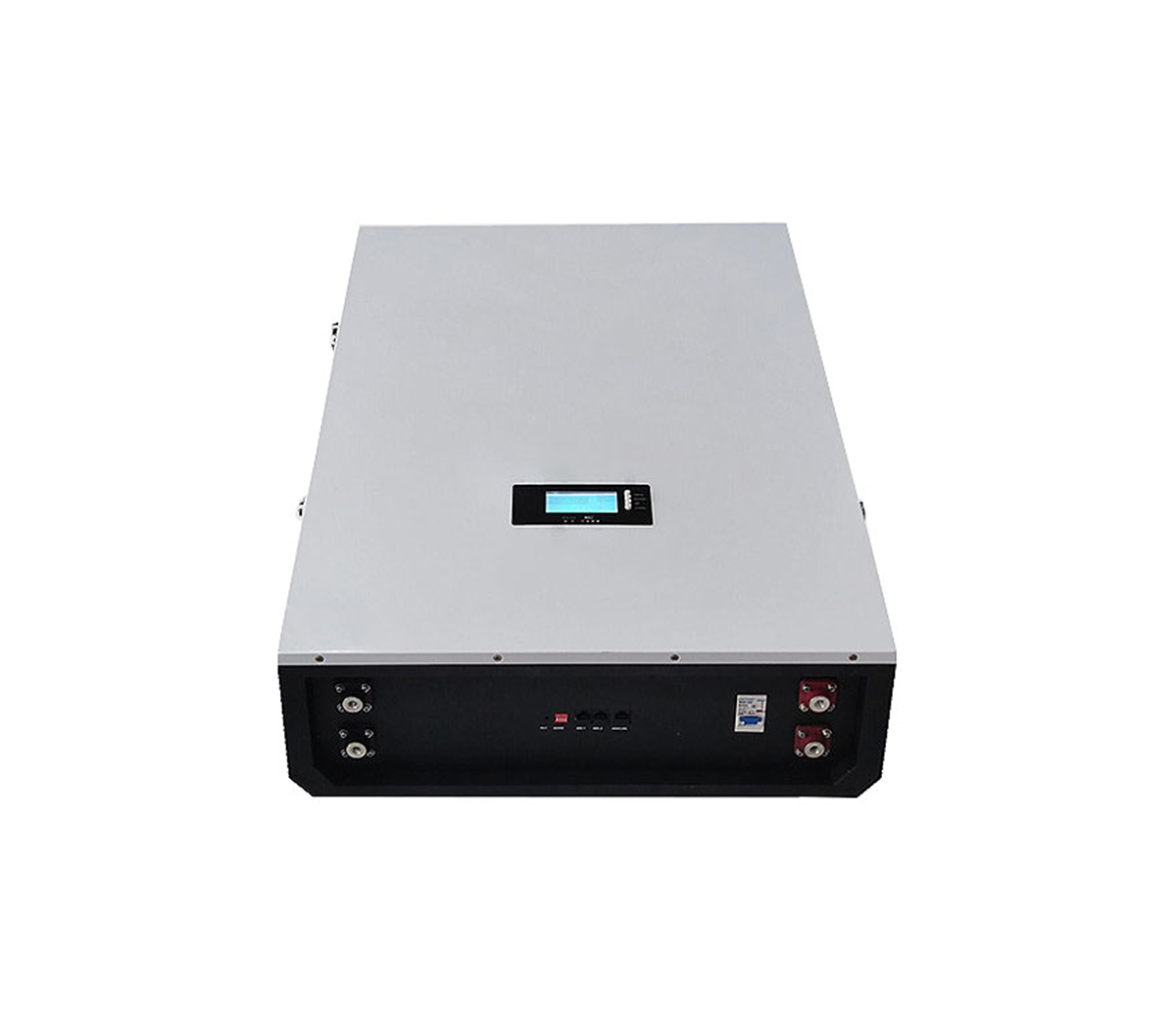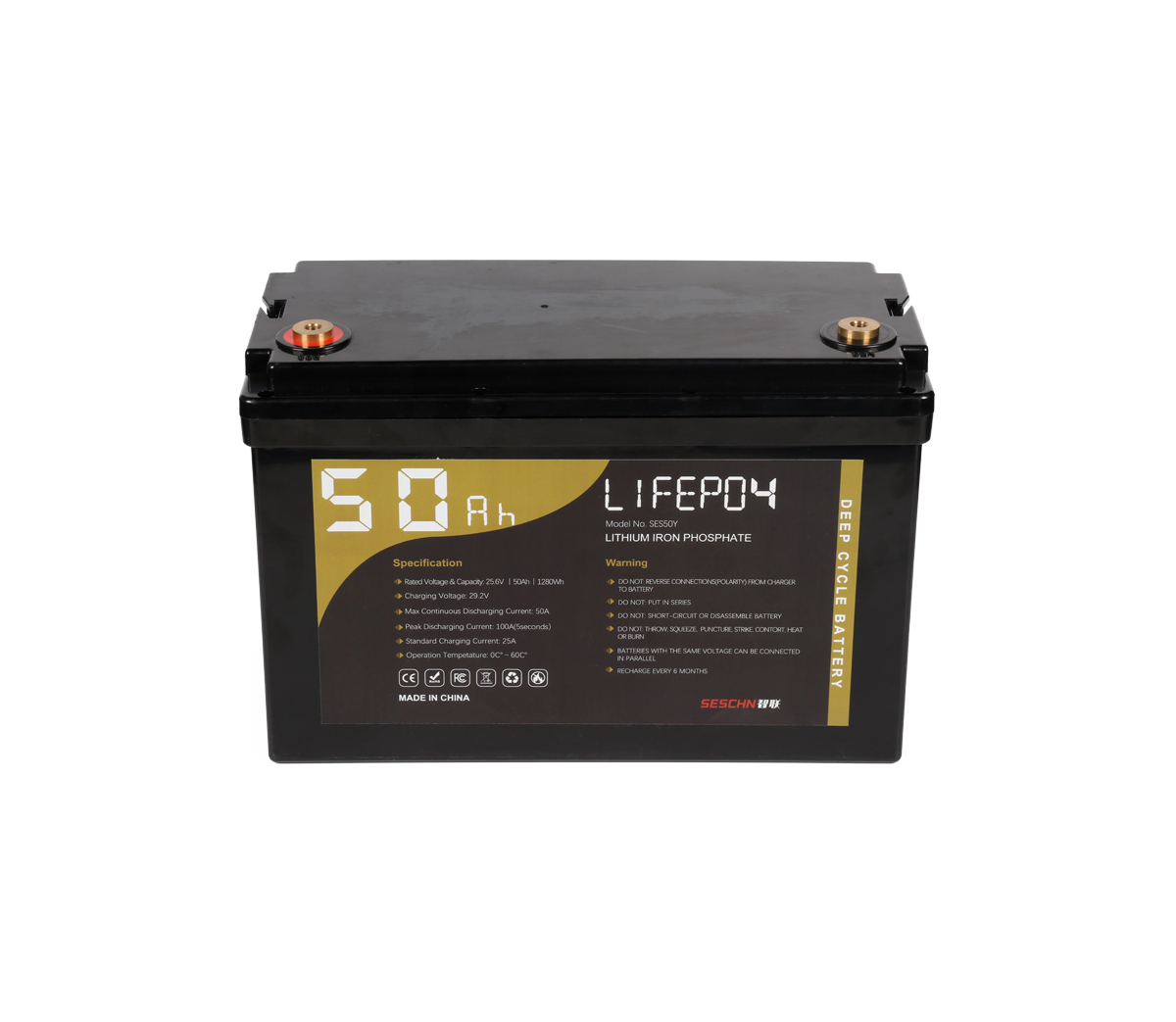Research on Silicon-based Anode Materials for Lithium Batteries
In the replacement of energy storage batteries, lithium-ion batteries have
become a key research area due to their various advantages, and have been
practically applied in a large number of energy storage projects, and have
achieved certain results.
In the replacement of energy storage batteries, lithium-ion batteries have
become a key research area due to their various advantages, and have been
practically applied in a large number of energy storage projects, and have
achieved certain results. Silicon-based anode materials are regarded as one of
the alternative products of the existing commercial carbon anode materials.
However, due to the large volume effect in the charge and discharge process,
they cannot be commercialized. For this reason, researchers have conducted a lot
of modification studies. . Based on two aspects of theoretical research and
experimental research, summarize the research progress of silicon-based anode
materials, hoping to promote the research of new alloy anode materials. The
rapid development in the field of new energy power generation in recent years
has put forward new requirements for the matching energy storage system. In the
replacement of energy storage batteries, lithium-ion batteries have become a key
research area due to their various advantages, and have been practically applied
in a large number of energy storage projects, and have achieved certain results.
The capacity of a lithium-ion battery is determined by the active lithium ion of
the positive electrode material and the ability of the negative electrode
material to insert and remove lithium. The stability of the positive and
negative electrodes in various environments determines the performance of the
battery, and even seriously affects the safety of the battery. , The performance
of the electrode determines the overall performance of the lithium-ion battery
to a certain extent. However, the current commercial lithium-ion battery anode
materials are mainly graphite-based carbon anode materials with a theoretical
specific capacity of only 372mAh/g (LiC6), which severely limits the further
development of lithium-ion batteries. Silicon-based materials are the research
system with the highest theoretical specific capacity in the research of anode
materials. The alloy formed is LixSi (x=0~4.4), and the theoretical specific
capacity is as high as 4200mAh/g, due to its low lithium insertion potential and
low atomic mass , High energy density and high Li mole fraction in Li-Si alloys
are considered as alternative products for carbon anode materials. However, the
silicon negative electrode has serious volume expansion and contraction during
the lithium insertion and removal cycle, which causes the destruction of the
material structure and mechanical pulverization, resulting in the electrode
showing poor cycle performance. In recent years, researchers have carried out a
large number of modification studies on silicon-based anode materials and have
made certain progress. Based on theoretical research and experimental research,
this paper summarizes the current research methods and research methods of
silicon-based anode materials at home and abroad, hoping to promote the research
of new alloy anode materials. Experimental research 2.1 Modification of silicon
Modification of elemental silicon is mainly done by adding the second component
to form Si-M alloys, reducing the volume expansion coefficient of silicon
alloys, or making silicon porous and nano-sized through various engineering
techniques. Reserve space for the volume expansion of silicon to reduce the
influence of silicon volume effect on the cycle stability of the
material. 2.1.1 Alloying of silicon The biggest obstacle affecting the
commercialization of silicon anode materials is the material pulverization
failure caused by the large volume effect of silicon during charging and
discharging. Experiments have shown that the introduction of the second
component to form the "Si-M" active-active or active-inactive system can
effectively reduce the volume expansion coefficient of silicon, and utilize some
of the characteristics of the active element or the inactive element itself,
such as metal ductility and chemical properties. Bond characteristics, etc.,
alleviate the volume effect of silicon in the process of inserting and removing
lithium. Lee et al. put silicon powder on the surface of a copper substrate
and heated it to 2000°C under vacuum to form a Si-Cu alloy thin-film anode
material with Cu as the substrate and gradually transitioning from the
copper-rich state to the Si-rich state from bottom to top. The half-cell test
shows that after 100 cycles of cycles, the mass specific capacity of the film
sample is 1250 mAh/g, and the area specific capacity is 1956 mAh/cm3. However,
excessive Cu leads to the presence of partially crystalline silicon, which makes
the cycle stability of the sample relatively poor. Yang Juan et al. used a
combination of mechanical ball milling and annealing to prepare Si-Fe composite
anode materials, and used the good electrical conductivity and ductility of
Si-Fe alloys to improve the cycle performance of Si. The results show that the
experimentally processed materials are partially alloyed, and different forms of
Si-Fe alloy phases are formed, but the degree of alloying is not complete. The
formation of Si-Fe alloy improves the cycle performance of Si as a negative
electrode material for lithium-ion batteries, and the higher the degree of
alloying, the better the electrochemical performance of the alloy material.
Zhang et al. used a combination of chemical corrosion, electrochemical reduction
and magnetron sputtering to prepare a three-dimensional nanostructured
multilayer Si/Al thin film anode material. The sample showed good
electrochemical performance, and the discharge rate was 4.2A/g. At current
density, the reversible specific capacity is 1015mAh/g after 120 cycles of
cycles. Even if the discharge current is increased to 10A/g, the reversible
specific capacity still reaches 919mAh/g. The improvement of electrochemical
performance is mainly attributed to the effective distribution of
three-dimensional nanostructures. 2.1.2 Porosity of silicon Porosity of silicon
can increase the specific surface area of the main silicon material in contact
with the electrolyte, improve the transport efficiency of lithium ions into the
material, and enhance the conductivity of the material. On the other hand, it
can be used for silicon. The volume expansion that may exist during the charging
and discharging process reserves space to reduce the influence of the silicon
volume effect on the pole piece. Porosity of silicon has been widely regarded as
an effective means to solve the volume effect of silicon. Figure 2 shows the SEM
topography of porous silicon. Tang et al. used PVA carbon source coating, HF
acid etching and pitch secondary coating to prepare porous Si/C composite anode
materials. The results show that when the content of the second-coated asphalt
is 40% (mass fraction), and the current density of 100mA/g, the specific
discharge capacity of the sample in the second week of charge and discharge
cycle reaches 773mAh/g, after 60 cycles The specific capacity remains at
669mAh/g, and its capacity loss rate is only 0.23%/week. The material exhibits
good cycle stability. Han et al. combined electrochemical etching and
high-energy ball milling, using P-type Si as the base plate and HF solution as
the etching solution to obtain a porous silicon film material with a porosity of
70%, and then ball milling and heat treatment in PAN to prepare Carbon-coated
porous silicon anode material. The sample has a reversible specific capacity of
1179mAh/g after 120 cycles at 0.1C, which has good electrochemical performance.
The method has low cost and is suitable for large-scale preparation of porous
silicon materials. 2.1.3 Silicon nanometer silicon-based anode materials
Researchers generally believe that when the size of silicon is small to a
certain extent, the influence of silicon volume effect can be relatively
reduced, and the small particles of silicon can be easily equipped with
corresponding dispersion technology. Reserve enough expansion space for silicon
particles, so the nanometerization of silicon is considered to be an important
way to solve the commercialization of silicon-based anode materials. Fig. 3 is
an SEM topography image of a carbon-coated silicon nanotube array. Wang et al.
used the ZnO nanowire template method to grow silicon nanotube arrays on a
carbon substrate, and compared the effect of carbon coating on silicon nanotube
arrays. The results show that the carbon-coated silicon nanotube array samples
exhibit good cycle stability, and the discharge specific capacity still reaches
3654mAh/g after 100 cycles of cycles. Sun et al. used the method of
plasma-assisted discharge to prepare Si/graphite nanosheets using nano-silicon
and expanded graphite as raw materials, and used them as anode materials for
lithium-ion batteries. The results show that the synthesized Si/C composite
sample has good cycle stability, the specific capacity of lithium intercalation
is 1000mAh/g, there is no capacity loss until 350 cycles, and the coulombic
efficiency is above 99%. 2.2 The modification of the structure design to the
silicon monomer reduces the volume expansion coefficient of silicon to a certain
extent, but because the volume effect still exists, and the conductivity of
silicon itself is not sufficient to support the rapid transport of lithium ions,
the silicon-based negative electrode Before the material is commercialized, a
lot of structural design is still needed to make it meet the requirements of
commercial application. 2.2.1 Core-shell structure The purpose of the
core-shell structure is to provide a buffer layer for the volume expansion of
silicon or silicon alloy through the basic characteristics of the shell, and to
control the volume effect of silicon or silicon alloy within the core-shell
structure. Researchers have conducted a lot of research on the core-shell
structure. Figure 4 is a schematic diagram and cycle curve of the Si/NiSi2/Ni/C
core-shell structure sample. Deng et al. used nano-Si as the core, NiSi2/Ni as
the shell layer to coat the nano-Si, and coated with a carbon layer to prepare a
silicon-based negative electrode material with a core-shell structure. The
experimental sample has a reversible specific capacity of 1194mAh/g, and the
105-week cycle capacity retention rate is 98%. The preparation method has the
characteristics of simple process and low cost. Wu et al. used electrospinning
technology to fill nano-silicon particles into hollow carbon fibers to prepare
Si/C anode materials with a core-shell structure. At a current density of
0.2A/g, the reversible specific capacity of the sample is 903mAh/g, and the
capacity retention rate for 100 cycles is 89%; when the current density
increases to 2A/g, the reversible specific capacity of the sample still reaches
743mAh/g, Has better rate performance. The hollow carbon fiber not only
suppresses the volume expansion of nano-silicon, but also improves the
conductivity of the material. 2.2.2 Sandwich structure Sun et al. used
industrial silicon powder, graphite and sucrose as raw materials, used
mechanical high-energy ball milling to reduce the size of industrial silicon
powder, and then ball-milled and mixed the industrial silicon powder and
graphite, and finally passed the sucrose high-temperature pyrolysis carbon
package It is covered to form a sandwich structure MS-G@C composite anode
material. The reversible specific capacity of the sample at 0.5C is 830mAh/g,
and the content of the 100-week cycle only attenuates 0.02% per week, which has
good cycle stability. Advanced structural design provides a higher conductive
network on the one hand, and on the other hand prevents Si powder from failing
during charging and discharging. 3. Summary and prospects This article
summarizes the research progress of silicon-based materials as anode materials
for lithium-ion batteries. In order to solve the possible volume effect of
silicon in the process of charging and discharging. Researchers have carried
out a large number of modification treatments on silicon on the one hand,
including the incorporation of the second component to form a Si-M alloy system,
as well as the porosity and nano-treatment of silicon. On the other hand,
researchers constructed various structures to further modify the silicon-based
anode in order to obtain commercial silicon-based anode materials. Experiments
have proved that it is difficult for a single modification method to achieve
commercialization of silicon-based anodes. To achieve commercial application of
silicon-based materials, a variety of methods must be used for compound
modification, and new engineering technologies need to be developed to achieve
large-scale applications. Control equipment.


































